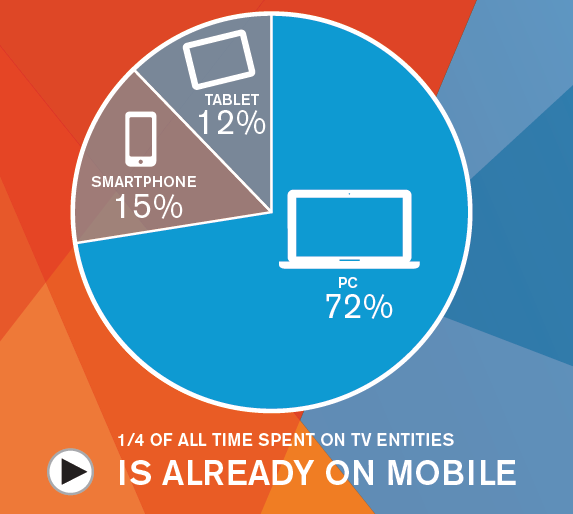The upcoming Digital Upfronts (a.k.a., “NewFronts”) have been dominating my conversations as of late, with a lot of it revolving around a single, albeit complicated, question: “How much of my ad spend should be allocated to digital video?”
For the uninitiated, NewFronts is an annual event that connects digital marketers and agencies with online publishers. It has its roots in the television “upfronts,” where the television networks showcase their upcoming seasons to ad buyers in an attempt to sell as much premium ad space as possible, as early as possible.
To even begin to answer this question, one must grapple with the realities of today’s highly fragmented media landscape, which is enough to make anyone’s head spin.
Understanding this new paradigm means being able to quantify audiences and behavior, and in many respects we are still at the early stages of that process.
In the face of such uncertainty, it’s no wonder that answering these seemingly simple questions can be so perplexing. And yet, they are also that much more essential when you consider the state of TV audiences today.
I recently read an amusing history of “fascinating” TV ratings facts. While these jarring facts may be packaged with a laugh track, I can assure you it is no laughing matter to marketers. A few of the more startling points in the article include:
- The series finale of “Cheers” was watched by 84 million people, which is more than double the all-time highest rated episode of “American Idol”.
- “Modern Family” is the second highest rated sitcom on television with around 10.5 million viewers. Sitcom “Sports Night” was canceled after two seasons on ABC in the ’90s because it only averaged 11.5 million viewers.
- Famed “Seinfeld” episode “The Contest” had more viewers the first time it re-aired than the combined number of viewers for the entire weekly modern day schedule on The CW.
Big brand marketing was so much easier when individual TV shows could consistently deliver scale, but the ability to achieve the same target reach and frequency objectives today tends to require advertising on more and more TV shows.
That’s where digital video comes in. It helps build reach beyond what TV can cost-effectively achieve alone among prized demographic segments.
The Platform-Shifting Digital Media Consumer
The first step in understanding premium content digital video is to wrap our heads around how consumers are accessing it today. PC-based online video viewing has been a mainstay for the better part of a decade, but only recently have we seen smartphones and tablets begin carving out their share of the digital video space.
According to data from comScore Media Metrix Multi-Platform, 28 percent of all premium TV digital video content is currently being accessed via smartphones and tablets. Desktops account for the balance.

More viewing platforms certainly means more complexity, but it also means greater opportunity.
A growing number of consumers today are spending their time watching exactly what they want when they want it, which translates to a higher level of consumer engagement and a better environment for marketers to land their message.
The increased availability of digital video also means more overall screen time for consumers, presenting more marketing touchpoints and opportunities.
UbiquiTV Enables Improved Media Allocations, More Opportunities
While the realities of UbiquiTV aren’t necessarily bad news for marketers, the question remains as to how much they should invest in digital video.
While there is never a one-size-fits-all approach to optimizing media allocations, there are some points worth considering:
- Savvy marketers can more efficiently deliver target reach and frequency objectives when they plan holistically across channel vs. planning in each channel as a silo.
- Specifically, layering digital video on top of TV campaigns can continue to build substantial incremental reach after the TV reach curves have flattened.
- Digital video ads are about 30 to 40 percent more likely to reach Under 35-year-olds than the typical online display ad, making this medium a valuable way of reaching these sometimes more-difficult-to-reach consumers.
- When running market mix models, numerous marketers have found digital video to be among their highest performing platforms; perhaps because it delivers the sight, sound and motion of TV in a lean-forward environment.
- While video monetization rates aren’t cheap and prices are increasing, 7 out of every 10 digital video content views still don’t carry advertising, presenting an untapped opportunity for marketers.
The future of TV may be complex, but digital video is clearly going to be a meaningful and growing part of it. More importantly, there is value to be realized with digital video advertising right now. The marketers who most quickly develop the competency to optimize across channels will be at a significant advantage versus the competition.

Leave a Reply
You must be logged in to post a comment.